
Article contents

Don’t delay! The best time to start a pension is right now. At 50, there’s still loads of time to build up a nice big pension pot to have a comfortable retirement – although it’s a good idea to put aside more than if you were younger. We’ll run through how to start one today too.
Hit the big 5-0 and a bit worried about your pension savings and retirement? Don’t panic just yet, there’s still plenty of time left. We’ll show you how you can build up a nice big pension pot even if you’re just starting now – and we’ll run through the best providers (pension companies) to use.
Asking yourself “should I be starting a pension at 50?” isn’t the right question, you should be asking yourself how much should you be saving for the retirement you’d like. And at 50, there’s no time to delay.
We’ll cover everything you need to know (and we promise it isn’t boring like pensions can be), so you can easily understand why starting a pension at 50 is super important, and how to get started, and even how much you might want to be saving.
In fact, if you’re in a hurry, the best option is to open a personal pension – and save as much as you can each month (even alongside a pension from your work, if you have one).
With every contribution you make, you’ll get a massive 25% bonus from the government (it’s free money!).
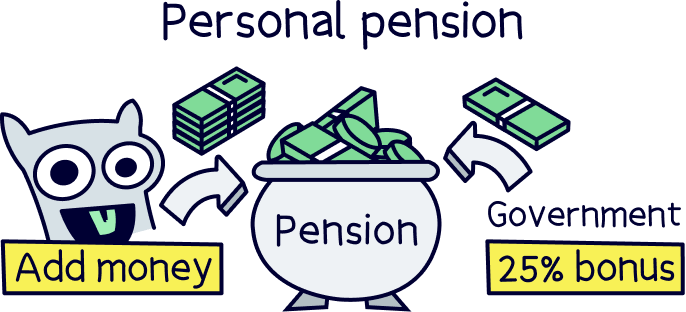
We’ll cover that in more detail below, but for now, here’s the best personal pensions to use:
Check out PensionBee – it’s easy to use, low cost and has a great track record of growing pensions.
Get £50 added to your pension



PensionBee is our recommended provider – they’ve thought of everything.
Their 5 star rated app (and website) makes it easy to set up and use. You can open a brand new pension, or transfer your existing pensions across (they’ll handle all the paperwork).
Simply pick from an easy to understand range of pension plans, and that’s it, the experts manage everything from there.
It’s low cost, with one simple annual fee. The customer service is excellent, and you’ll get a dedicated account manager for any questions you might have.

And, when the time comes to retire, withdrawing from your pension is easy too.
You can also use them if you're self-employed or a company director.
Great app



A great and easy to use pension. Add money from your bank or combine old pensions into one, (they’ll find lost pensions too).
The customer service is excellent, with support based in the UK.

Beach is an easy to use pension app (and easy to set up), where you just add money and the experts handle everything. It’s all managed on your phone with a great app, and you can see your total pension pot whenever you like.
If you’ve got lost or old pensions, Beach can also find them and move them over too, so you can keep all your retirement savings in one place, and never have to worry about losing them in future.
You’ll get an automatic 25% bonus on the money you add to your pension pot from your bank account (tax relief from the government), which refunds 20% tax on your income, and if you pay 40% or 45% tax, you’ll typically be able to claim the extra back too.
The pension plan (investments) are managed by experts, who are the largest investment company in the world (BlackRock). And they consider things like reducing climate change, meaning your savings could make the world a little better in future too.
You can also save and invest alongside your pension with an easy access pot (access money in around a week), designed for general savings, with the investments managed sensibly by experts too. And money made can be tax-free within an ISA.
Fees: a simple annual fee of up to 0.73% (minimum £3.99 per month).
Minimum deposit: £25
Customer service: excellent
Pros:
Cons:
Check out PensionBee – it’s easy to use, low cost and has a great track record of growing pensions.
If you're a bit unsure about pensions and would prefer to speak to an expert, check out Unbiased¹ – it's a free service to find pension experts (financial advisors) in your local area.
No! Don’t panic, whatever you do – but don’t put it off any longer. Starting a pension at 50, or any age, is still fine, and of course, much better than never starting at all. There’s probably still many years left before you retire.
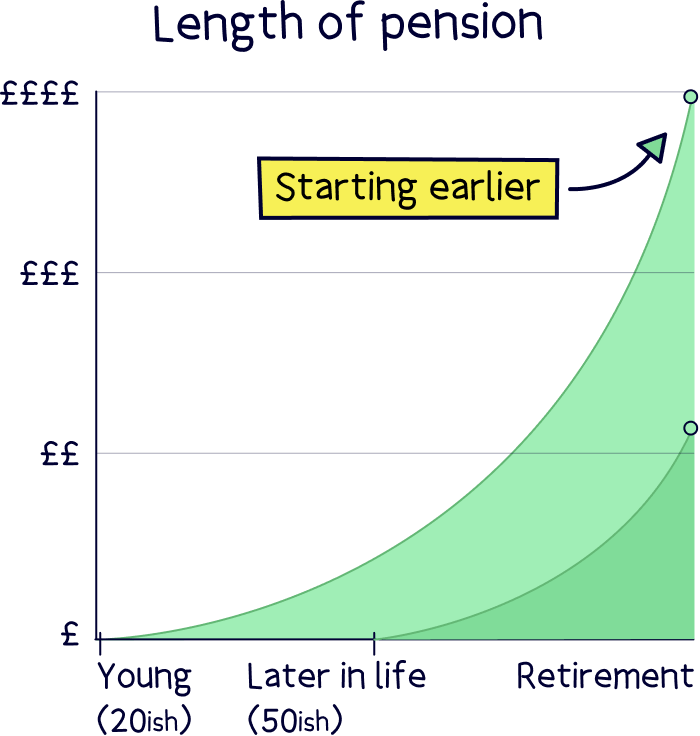
Pensions grow over time thanks to the investments within the pension, which are typically managed by experts, who use sensible investment strategies, designed to grow pensions over time. And the experts are very good at it.
Your pension can grow nicely until, and even after, you retire – you don’t actually have to take it all immediately when you do retire, so don’t feel like you’re running out of time.
Starting earlier can make things a lot easier, as you’ll have more time to save, and more time for your pension pot to build up over time – so at 50, it simply means (ideally) you’re going to have to save more each month, so you can build up your pension pot enough to have a comfortable retirement in your sunset years.
We’ll cover how much you might want to save into your pension a bit later on, but really, it’s down to how much you can comfortably afford to save each month. Although, anything is better than nothing, and it all adds up (remember you get free money on your contributions too, more on that below).
Let's quickly run through the different types of pensions so we’re all on the same page. There’s two main types of pensions, the State Pension, and private pensions.
This is the pension you’ll get from the Government, when you reach the ‘State Pension Age’ (currently 66). You’ll get this if you’ve paid at least 10 years worth of National Insurance contributions, and to get the full amount, you’ll need to have paid 35 years worth.
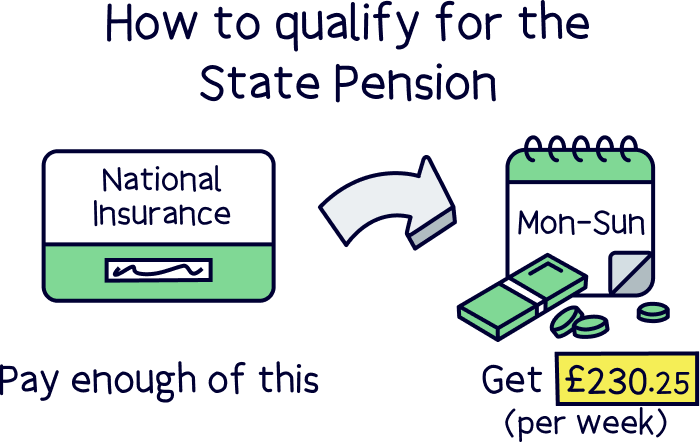
It’s currently £230.25 per week. And typically rises by a little bit each year. You also don’t have to take this at 66 if you don’t want to. You can delay retirement until you’re ready, and when you do retire, you’ll get a bit more each week instead.
Private pensions are simply pensions that aren’t the State Pension, so they’re pensions in your name, and ultimately, you decide when to set them up, how much to pay in, and when to start taking money from them – although you can’t withdraw any money until you’re at least 55 years old (57 from 2028).
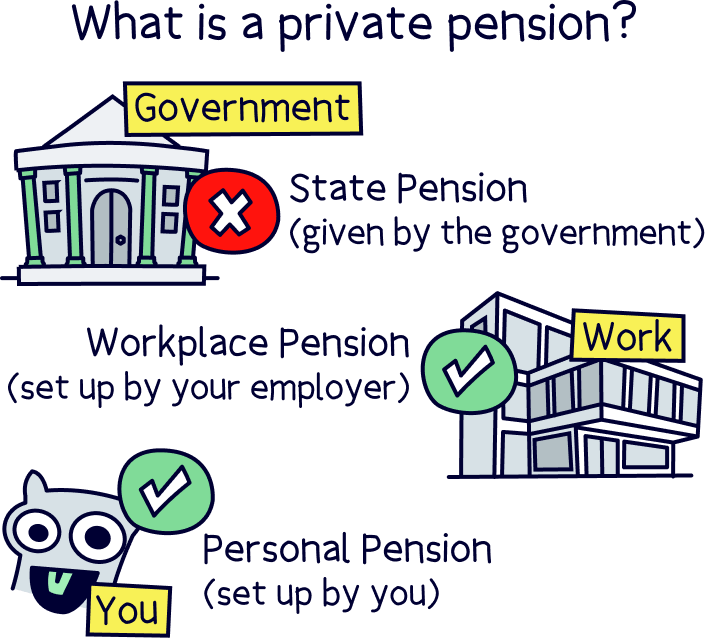
And here’s where it gets a bit more complicated, there’s two main types of private pension, a workplace pension, and a personal pension.
A workplace pension is a pension your employer sets up for you (if you are employed). When you start a new job as an employee, you should be automatically enrolled.
If you pay in at least 5% of your salary, by law, your employer has to pay in 3% too (called employer contributions), so it’s basically like a free pay rise.
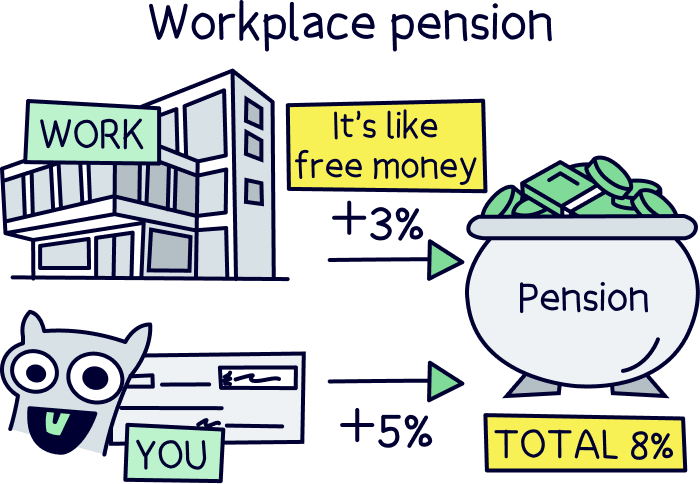
The downside is that the employer decides which pension provider (people who manage the pension) you use, and usually have high fees (expensive) and don’t have a great performance of growing money over time. You also can’t transfer a workplace pension until you leave your job.
It’s typically only a good idea to pay 5% into your workplace pension, to get the free 3% from your employer, and then use a personal pension to save more.
A personal pension is a pension you can set up whenever you like, and is a great addition to a workplace pension (if you’re employed).
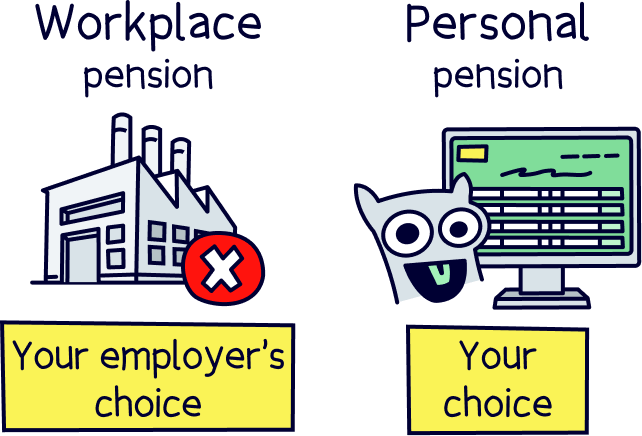
If you’re self-employed, a personal pension is your only option. Our top recommended provider, PensionBee¹, is great for self-employed people.
If you’re keen to learn more, here’s our guide to the best private pensions for the self-employed.
Personal pensions are pretty great, you can choose any pension provider you like, and whenever you pay in, you’ll get a massive 25% bonus from the government (plus more if you pay more than 20% tax – we’ll cover that later).
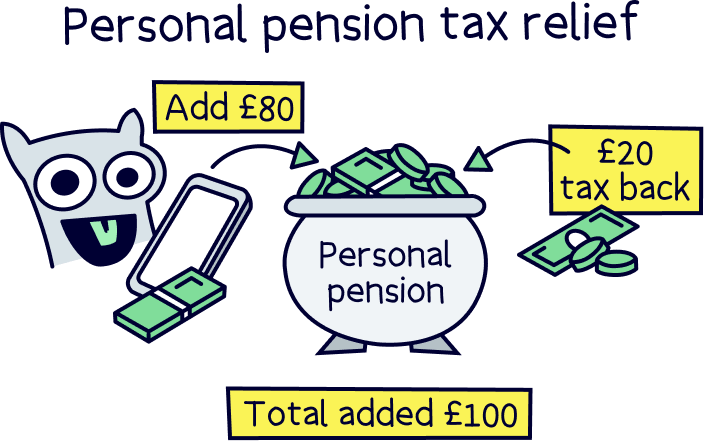
A regular personal pension is typically all managed by experts, who will grow your money over time, in a sensible way, using investments that typically grow over time (often called a pension fund).
We highly recommend opening a personal pension managed by experts – it’s typically the best way to save for retirement. If you’re already keen to get started, here’s the best personal pensions.
However, you can also manage your own investments if you want to, and these are called self-invested personal pensions (SIPP). We don’t typically recommend these to most people, unless you know what you’re doing when it comes to investing. If you are interested, here’s the best SIPP providers.
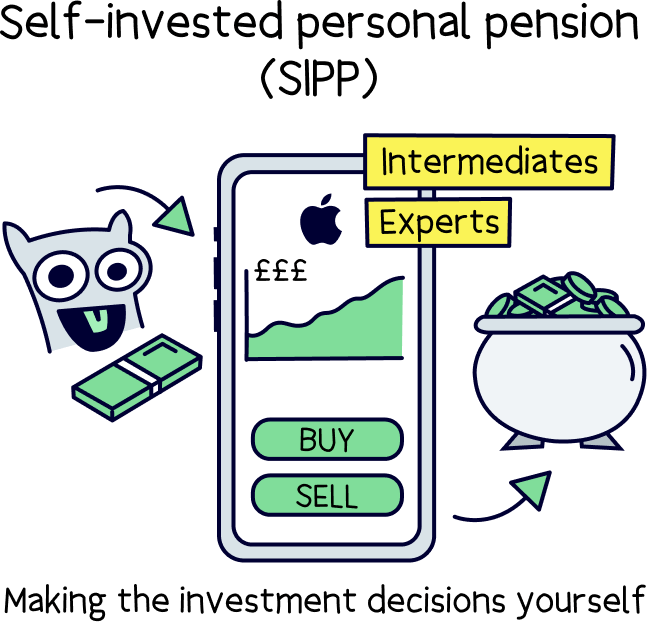
Note: we’re talking about defined contribution pension schemes, where you simply add money, and build up your pension pot over time. The alternative is a defined benefit pension scheme, which is common in government workplaces, such as the NHS, and this is where you get a set income when you retire (such as a final salary pension).
We mentioned you can’t access your money until you’re at least 55 years old, although ideally you’ll want to keep it in there for as long as possible (e.g. until you retire), so you can keep benefiting from your pension growing over time.
However, when you do decide to take it, the first 25% will be tax-free, and you can take this as a tax-free lump sum if you like. The remaining 75% will be liable for Income Tax, just like your salary now – the rate of Income Tax you’ll pay will depend on your annual income at the time (e.g. how much you withdraw from your pension).
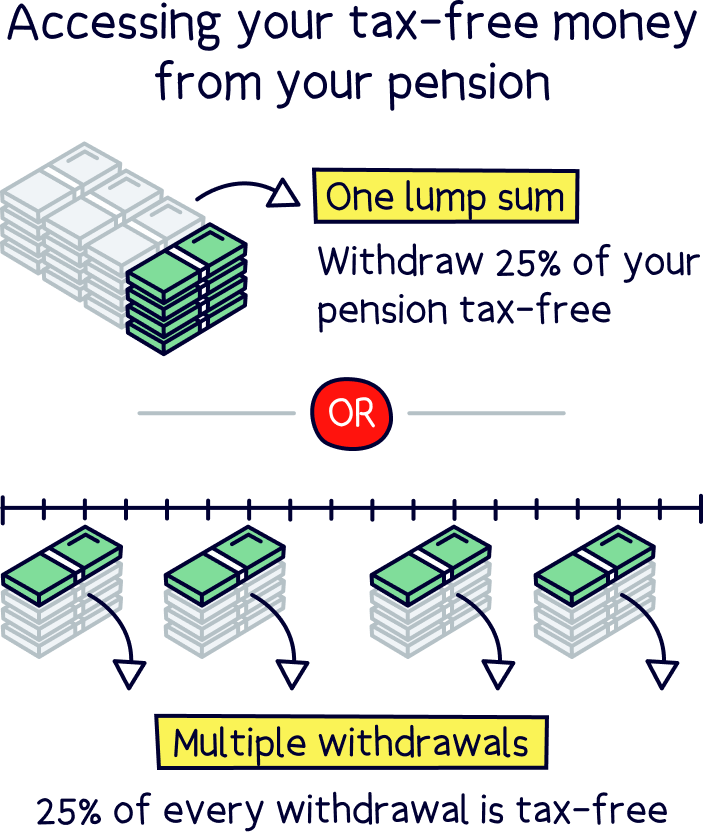
Pensions have amazing benefits that no other savings account has, or any other type of investment (e.g. property) has. And, to benefit, it takes time, so you really do want to start as soon as you can!
Let’s run through them.
Actually saving for retirement using a pension is a great way to make sure you’ll have enough to live on when you’re older. You might think you can keep working if you need to, but who knows what the future might hold.
And, you might be thinking that’s what the government pension is for (the State Pension), but this is unlikely to be enough to live on. Currently, it’s £230.25 per week, or £11,973 per year. Not much at all.
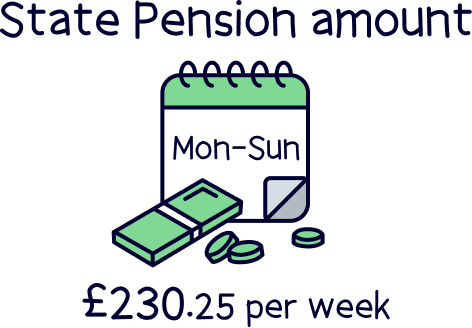
The minimum suggested retirement income is £13,400 per year, and a comfortable retirement is £43,900 (we’ll cover these in more detail below). So, ideally you need your own private pension pot to contribute towards your income too.
Pensions are the best way to save for retirement thanks to all the lovely pension tax relief you get – they’re the most tax efficient way to save for retirement – the Government wants you to save as much as possible for retirement, so you don’t have to rely on them when you’re old and grey!
If you’re saving for a pension through your employer (called a workplace pension scheme), it’s taken out of your salary before you pay tax.
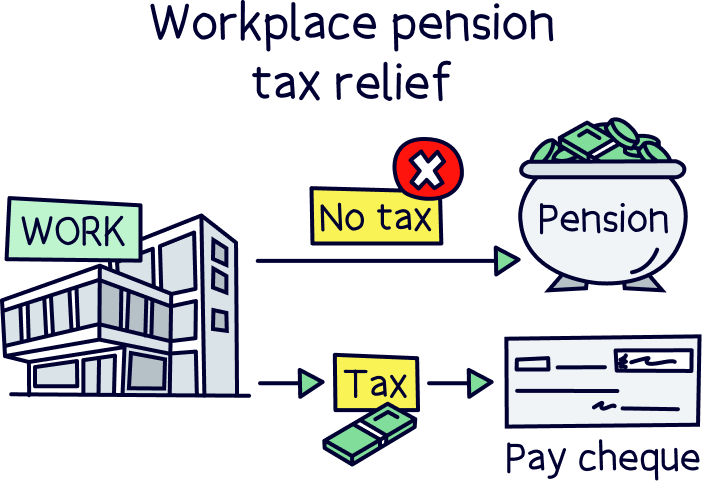
If you’re saving with a personal pension (a great idea alongside a workplace pension), then you’ll actually get a massive 25% bonus on all of your pension contributions, it’s automatically added to your pension. We’re not joking!
This is to refund the tax you have already paid on your income. And, if you’re a higher rate taxpayer (earning over £50,270 per year, paying 40% tax), or an additional rate taxpayer (earning over £125,140 per year, paying 45% tax), you can claim some of the tax paid at those rates too (by filling out a Self Assessment tax return).
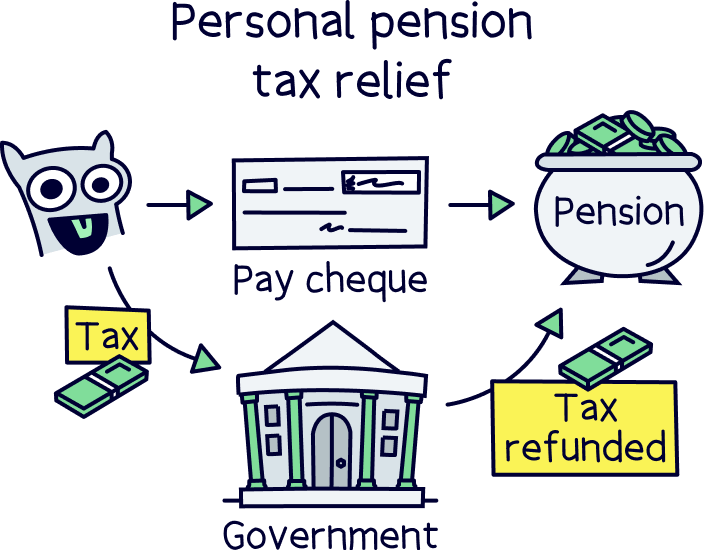
You don’t get this type of tax relief with any other savings account.
As your money grows inside a pension, you’ll also be saving tax-free – so you don’t need to worry about paying tax each year. With investments, sometimes you’ll pay Capital Gains Tax on your profits (among other taxes).
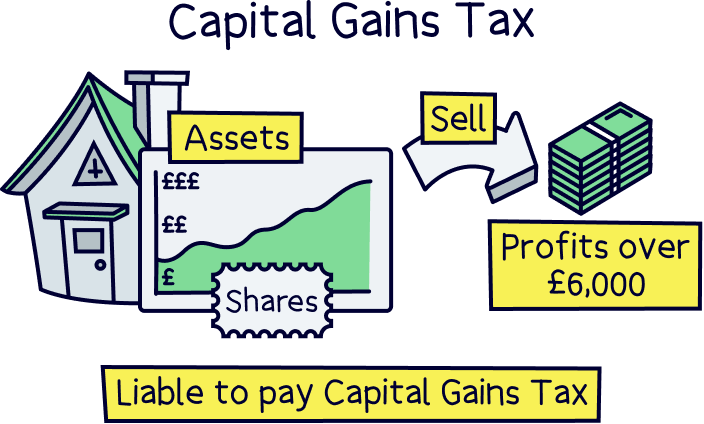
This tax saving can boost your pension further over time, thanks to compound interest (we’ll cover this just below).
If you’re thinking longer term, it’s also good to know that a pension doesn’t count towards any Inheritance Tax that your family might have to pay when you pass away. They may have to on all of your other assets (things like money, property, shares etc.), which all makes up your ‘estate’.
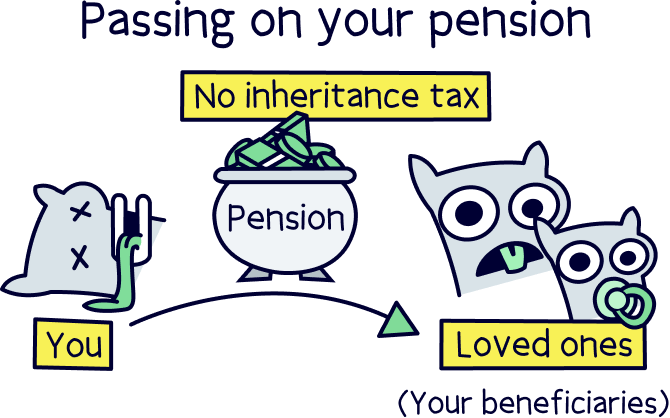
With a pension, if you pass away before you’re 75 years old, your family can inherit your pension with typically no tax to pay at all. After 75, it will normally count as Income Tax (the same as a salary now).
We've mentioned a few times that adding money as soon as you can (and continually adding money) is the best thing you can do for your pension. Well, that’s because of something called compound interest…
Compound interest is where the money you make from your savings (the interest), begins to make money too. And this snowballs over and over, turning even small amounts into potentially huge figures.
Let’s use an example, as it’s quite confusing. Imagine you started with £1,000, and you’re able to add £300 to your pension each month, and your investments grow at 5% per year on average.
After 25 years, you’ll have a whopping £184,134.20!
And 10 years after that, you’ll have £346,561.56 saved. Pretty incredible right?
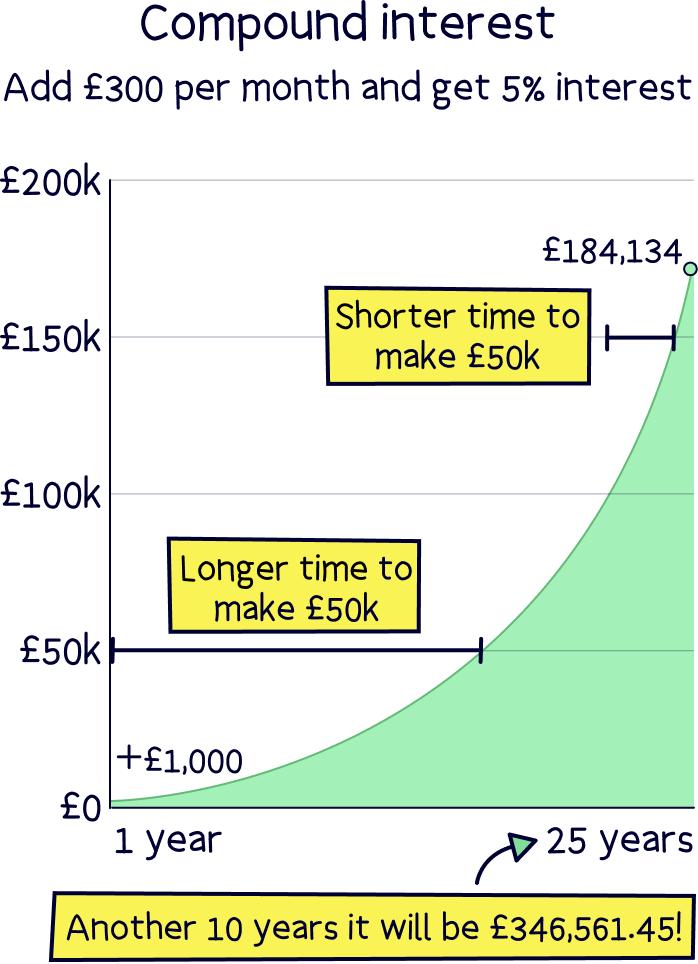
Aside from saving as much as you comfortably can each month – the general rule of thumb is to divide your age by 2, and use that number as a percentage of your salary, to put into your pension.
So, if you are currently 50, you should be paying 25% of your salary into your pension.
That sounds like quite a lot right? But planning for your future is super important. If you can, look to prioritise paying into your pension, especially if you don’t currently have one. Getting started, and building it up with as much as you can will really pay off later down the line. You don't want to be working forever after all.
Let’s get a bit more technical and work out how much you’ll need to put away into your retirement savings, covering the 3 retirement standards:
These figures include receiving the full State Pension too (so if you’re not likely to get this, you’ll need to save more). Remember you need to have paid enough National Insurance for 35 years to get this.
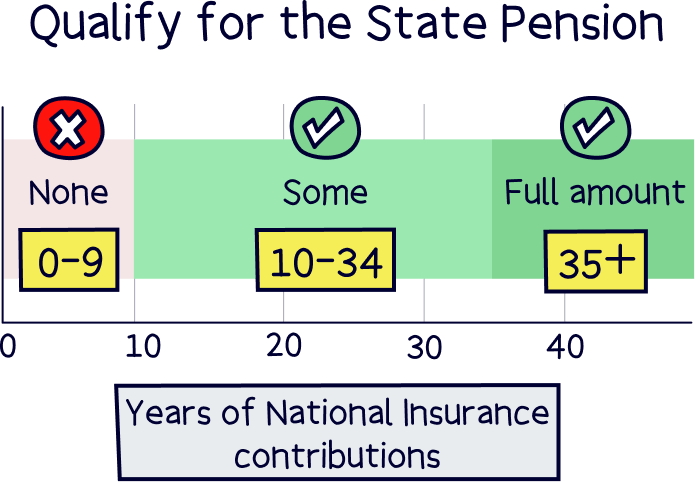
These are official estimates of how much a single person would need in retirement, according to the Pension and Lifetime Savings Association. Here’s an outline of each:
You can learn more about these on the Retirement Living Standards website, and our guide to how much you’ll need to retire.
Here’s how much you’ll need to save each month (at 50 years old, looking to retire at 68):
Yikes! Quite a lot right? These are just guidelines, and if you have a small pension already, you’ll be able to save less. Plus, you might also be paying into a workplace pension scheme too (if you are employed).
What’s really important here is that if you delay until you’re older, the payments only get bigger – almost impossible numbers. So start saving right away, and as much as you can.
Nuts About Money tip: you can learn lots more about how we worked this out with our guide: how much should I pay into my pension?
Now before you get too carried away, there are some pension limits on how much you can save per year, but they’re pretty high.
You can only save as much as your total annual income per year (e.g. your salary), or up to £60,000, which is called your pension annual allowance. This is in total across all of your pensions (if you have more than one).
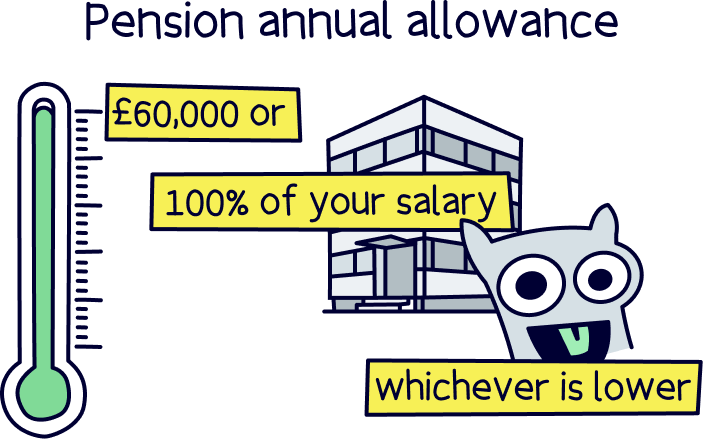
We hope the figures above haven't scared you too much. The first step is getting started, and it's super easy. It's 3 easy steps, and you could be up and running with a pension in a few minutes.
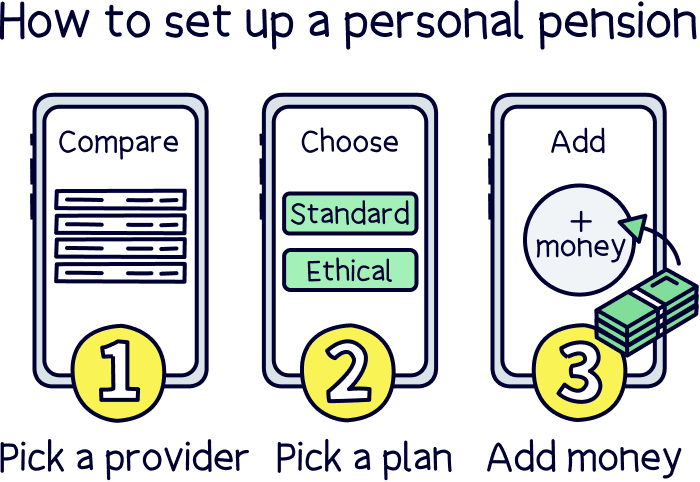
We’ve made this bit really easy for you, and reviewed all the best pension providers in the UK. They’re all different, with different fees, and investment options (pension plans), so it’s a good idea to find one that you like.
Our top recommendations are super easy to use, have low fees and a great track record of growing money over time, and here they are:
Get £50 added to your pension



PensionBee is our recommended provider – they’ve thought of everything.
Their 5 star rated app (and website) makes it easy to set up and use. You can open a brand new pension, or transfer your existing pensions across (they’ll handle all the paperwork).
Simply pick from an easy to understand range of pension plans, and that’s it, the experts manage everything from there.
It’s low cost, with one simple annual fee. The customer service is excellent, and you’ll get a dedicated account manager for any questions you might have.

And, when the time comes to retire, withdrawing from your pension is easy too.
You can also use them if you're self-employed or a company director.
Great app



A great and easy to use pension. Add money from your bank or combine old pensions into one, (they’ll find lost pensions too).
The customer service is excellent, with support based in the UK.

Beach is an easy to use pension app (and easy to set up), where you just add money and the experts handle everything. It’s all managed on your phone with a great app, and you can see your total pension pot whenever you like.
If you’ve got lost or old pensions, Beach can also find them and move them over too, so you can keep all your retirement savings in one place, and never have to worry about losing them in future.
You’ll get an automatic 25% bonus on the money you add to your pension pot from your bank account (tax relief from the government), which refunds 20% tax on your income, and if you pay 40% or 45% tax, you’ll typically be able to claim the extra back too.
The pension plan (investments) are managed by experts, who are the largest investment company in the world (BlackRock). And they consider things like reducing climate change, meaning your savings could make the world a little better in future too.
You can also save and invest alongside your pension with an easy access pot (access money in around a week), designed for general savings, with the investments managed sensibly by experts too. And money made can be tax-free within an ISA.
Fees: a simple annual fee of up to 0.73% (minimum £3.99 per month).
Minimum deposit: £25
Customer service: excellent
Pros:
Cons:
Check out PensionBee – it’s easy to use, low cost and has a great track record of growing pensions.
If you’re using one of our recommendations, they’ll give you few simple pension plans to choose from – these are the investments, which are all managed by experts.
These plans will typically aim to grow your money either slowly over time, without much risk (your money going down the short term), or grow quicker, with more risk.
Typically, when saving over a long period of time, it can be better for people to save with a higher risk option, as any short term ups and downs will smooth out over time, and your money could grow much more.
When nearing retirement (such as over 60 years old), some people opt to move to a lower risk pension plan, so there’s fewer ups and downs, and they have a bit more stability.
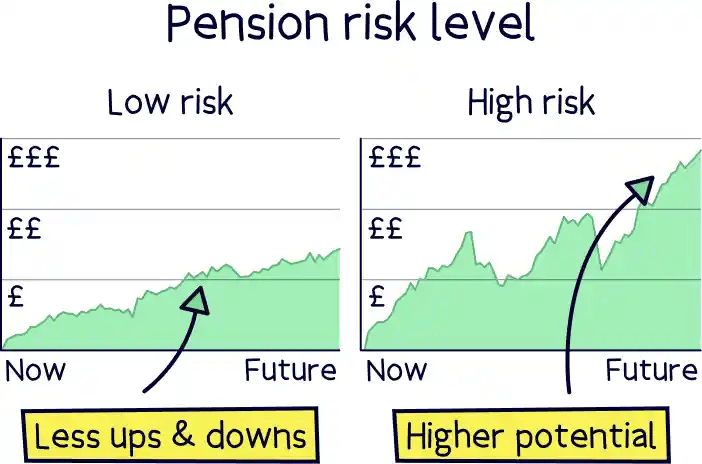
However, this isn’t financial advice, it’s always best to speak to a financial advisor about retirement planning and retirement goals, if you feel you’d like some advice.
Not sure what financial advisor to use? Check out Unbiased¹ – they’ll find the best financial advisors in your area and connect you directly with them.
With our recommended options, you can also pick an ethical pension plan if you want to – that means they only invest in socially responsible companies, having a positive impact on the world (e.g. less energy companies burning fossil fuels).
Once you’re all set up, all that’s left to do is add some money, and ideally set up a regular payment each month (please do this for your future self).
Our recommended providers will let you pay in as much, or as little as you like, and you can stop and start payments whenever you want. So, if you are a bit tight for cash in the future, don’t worry, you can pause payments, and start again later – the great thing about personal pensions is that it’s all in your control.
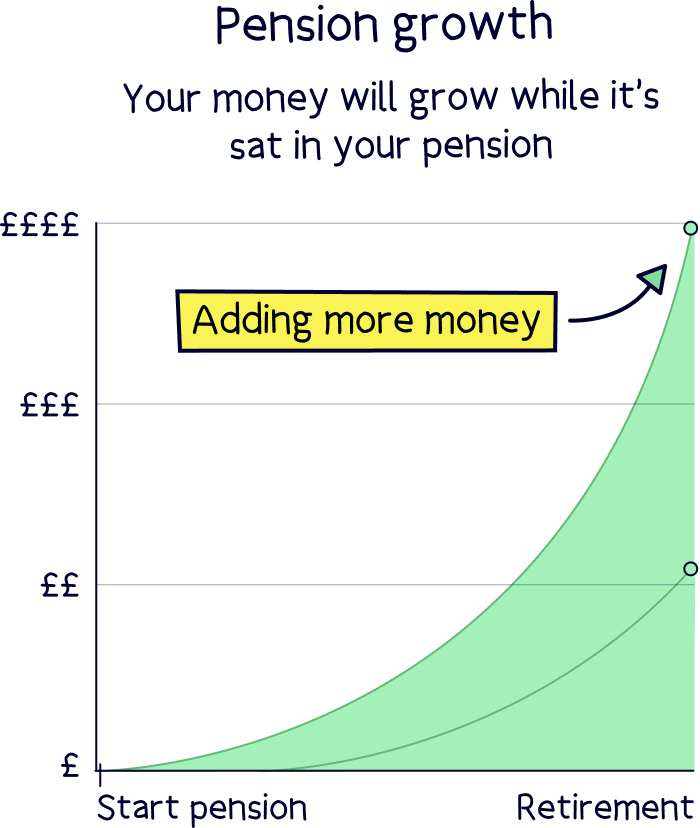
However do keep in mind that to build up a big pension pot, you’ll need to add as much as you comfortably can.
If you’ve got any old pensions lying around collecting dust, such as a workplace pension set up from that old job you’ve completely forgotten about 10 years ago. You can move this over to your nice new pension provider too.
This is called consolidating your pensions, and with a modern provider (such as our recommendations), they’ll handle everything for you.
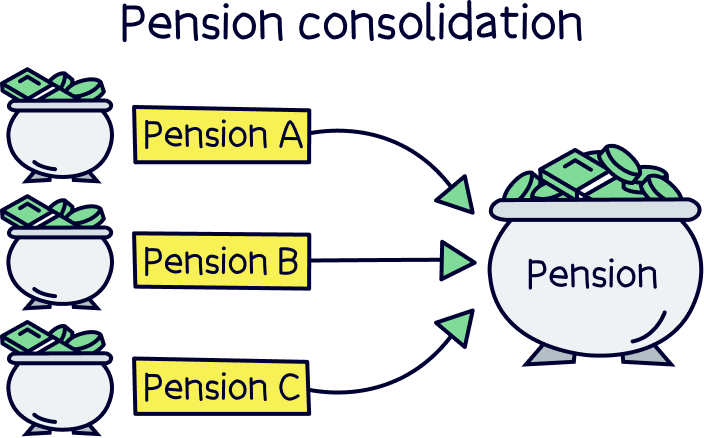
All you need to know is where your pension is – the HR department at your old job should be able to let you know if you’ve forgotten, or try the Government’s Pension Tracing Service.
Your new provider will handle all the paperwork, your old pension will simply turn up in your new pension pot after a few weeks (or sometimes longer).
We hope that’s got you motivated to get saving for retirement – it’s never too late!
Save as much as you can, as soon as you can. That’s the trick. Although make sure you can still live comfortably of course.
You’ll benefit from some amazing tax-free benefits – your money will grow tax-free, and you’ll get a massive 25% bonus on your pension contributions. It will soon add up.
With a personal pension, you’ll be able to pick a provider you like, pay in as much, and transfer it whenever you like too.
As a recap, our top recommended pension provider is PensionBee¹, it’s easy to use, has low fees and a great track record of growing money over time. You’ll also get £50 added to your pension if you sign up with Nuts About Money, and you can start with just £1.
There’s also Beach¹, which is great too, and offers a pension and ISA (for everyday savings) at the same time.
For all your options, here’s the best pension providers – including self-invested personal pensions (SIPPs).
And that’s it. All that’s left to say is get saving! Your future self will really thank you.
Check out PensionBee – it’s easy to use, low cost and has a great track record of growing pensions.
We’d love to hear from you, and it will help others too.
Check out PensionBee – it’s easy to use, low cost and has a great track record of growing pensions.